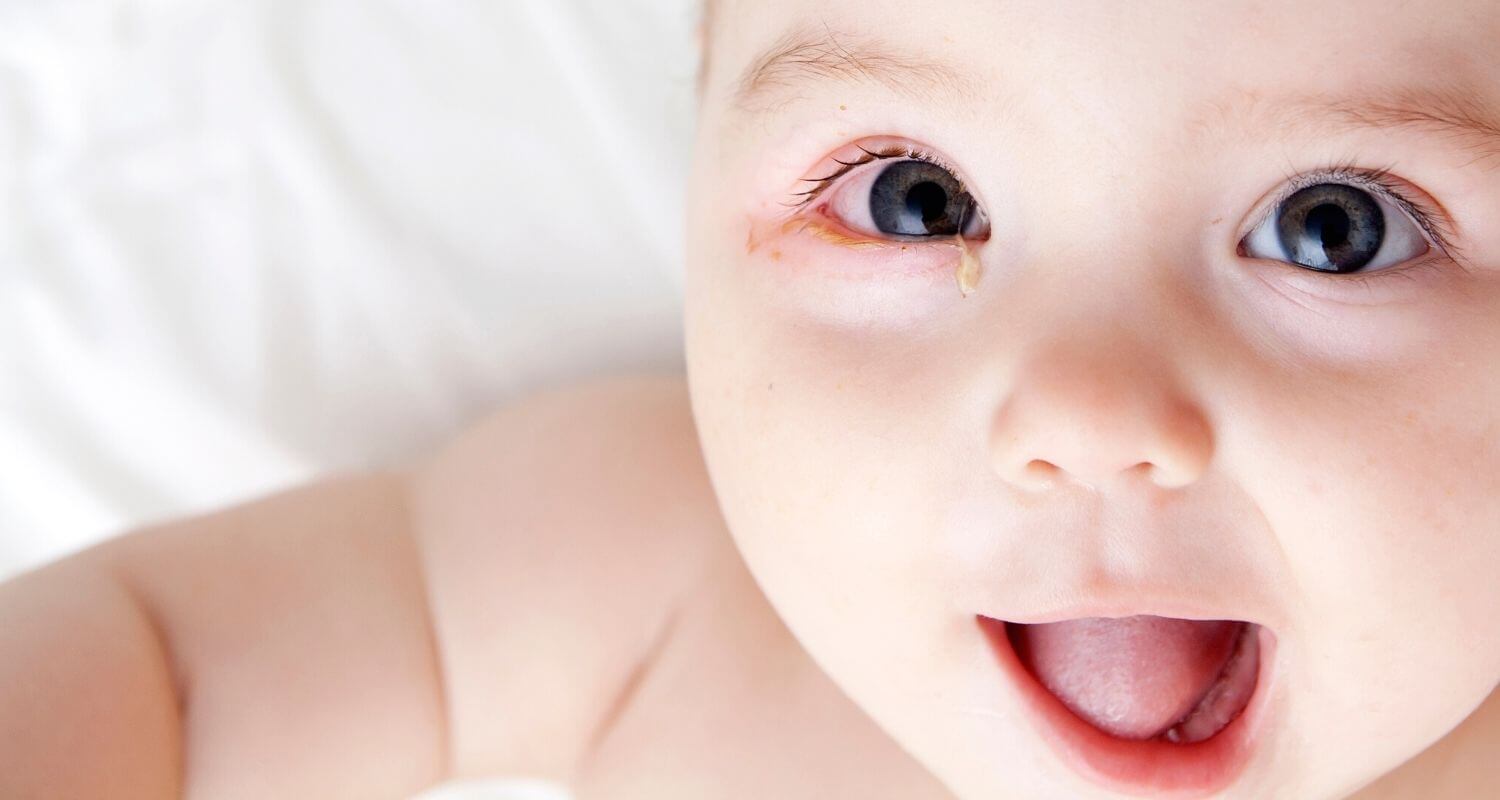Pink eye and inflammation on the inner eyelids? It could be baby conjunctivitis. Nothing to worry about, conjunctivitis is fairly common with babies and kids and easily treated.
If you are worried your child has conjunctivitis, consult your paediatrician. It’s important to understand the causes of the infection in order to heal it properly. Should the conjunctivitis be bacterial, antibiotics might be necessary. However if the pink eye is viral, allergic or due to a blocked tear duct, there are home remedies that can help relieve the symptoms while the body fights off the inflammation.
What is baby conjunctivitis?
The pink colour can be a little scary. Conjunctivitis is the inflammation of the part of the eye called the conjunctiva, which is the membrane lining the inside of the eyelid as well as the eyeball. As the blood vessels become irritated and more visible, it gives the eye a pink colour.
Pink eye is usually caused by viruses, bacteria, chemicals, allergies, or exposure to other irritants. In babies, inflammation of the conjunctiva can also be caused by a blocked tear duct.
Pink eye in newborns
When a newborn baby gets pink eye, it can be related to the birthing process such as chemical eye drops used to treat the eyes at birth, or an infection passed along from the mother in the birth canal.
Even for newborns, conjunctivitis isn’t necessarily serious. However, it’s best to get a proper medical evaluation to avoid it evolving into a serious infection. If the pink eye isn’t treated properly, it could lead to infections into other parts of the body or sight issues.
Baby conjunctivitis
Conjunctivitis in babies is typically caused by viruses and bacterial infections. It’s not as preoccupying as it is with newborns. Although it’s not an emergency, it’s a good idea to consult your paediatrician.
What are the symptoms of pink eye?
A big swollen pink eye is usually quite obvious. Some of the symptoms of conjunctivitis are:
- Puffy, swollen eyelid
- Pink colouring of the eye
- Crusty buildup in the corner of the eye
Keep in mind that conjunctivitis can spread from one eye to another or from one person to another. Wash your baby’s hands and your own frequently to avoid propagation.
3 natural remedies to alleviate baby conjunctivitis
Even if your child has a bacteria caused conjunctivitis and needs antibiotics, these home remedies can help alleviate pink eye and discomfort.
Caution: Use a different cloth or cotton pad for each eye and remember to wash any cloth or object you use to avoid the spread of the infection.
Breast milk a superpowered healer
A mother’s milk really is best for a baby! Breast milk has incredible nurturing and healing properties. The nutrients present in the breast milk called colostrum is rich in micronutrients. Even some doctors recommend using breast milk to help with pink eye.
A study from 2012, studied the topical application of human breast milk and found it to be an effective antibacterial for common causes of paediatric conjunctivitis.
You can apply the breast milk to your baby’s eye directly or with a saturated cloth or cotton pad applied to the eye. Do this 2 to 3 times a day.
Honey a natural antibacterial
Well known for its anti-fungal, antibacterial and antibiotic properties, honey can be used effectively for eye infections. Select a raw honey rather than a pasteurised one, for its full properties.
Use ¼ cup honey and mix to an equal part of distilled lukewarm water. Using a clean cloth or cotton pad, apply to the eye 2 to 3 times a day. For external use only.
Chamomile tea for baby conjunctivitis
Famous for its cooling and calming properties, chamomile tea is a great relief for eye infections.
Brew chamomile tea or flowers in boiling water and set it aside to cool. Use a cloth or cotton pad to apply to the eye, 2 to 3 times a day.
Want more natural remedies for babies? Check out my suggestions for newborns and toddlers’ cradle cap.
Until next time, Tania xx
*This article is provided for informational purposes only, and does not intend to substitute professional medical advice, diagnosis, or treatment.

